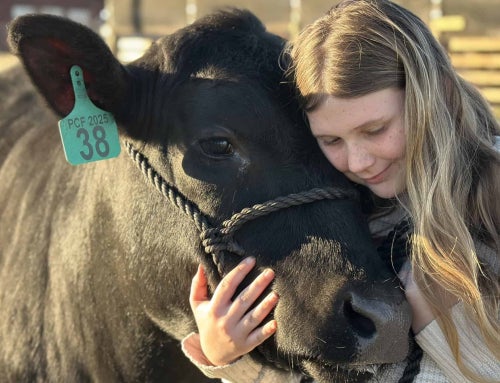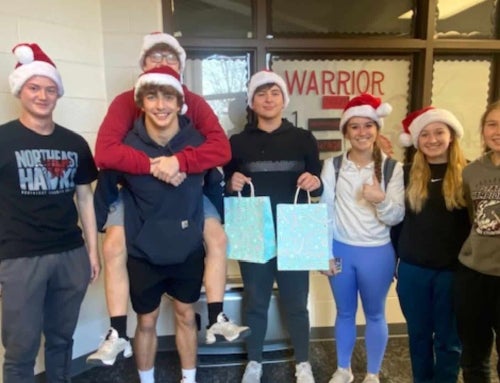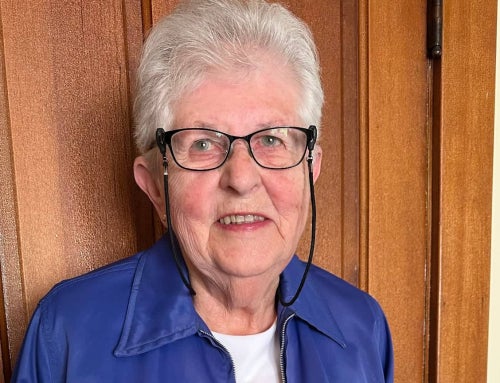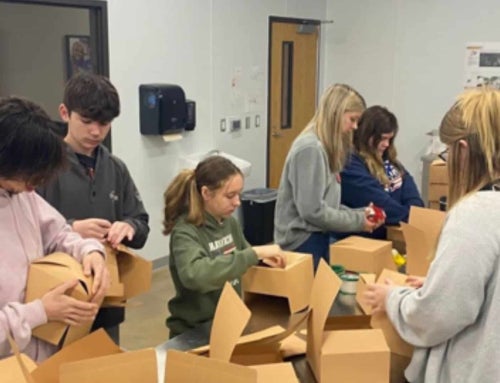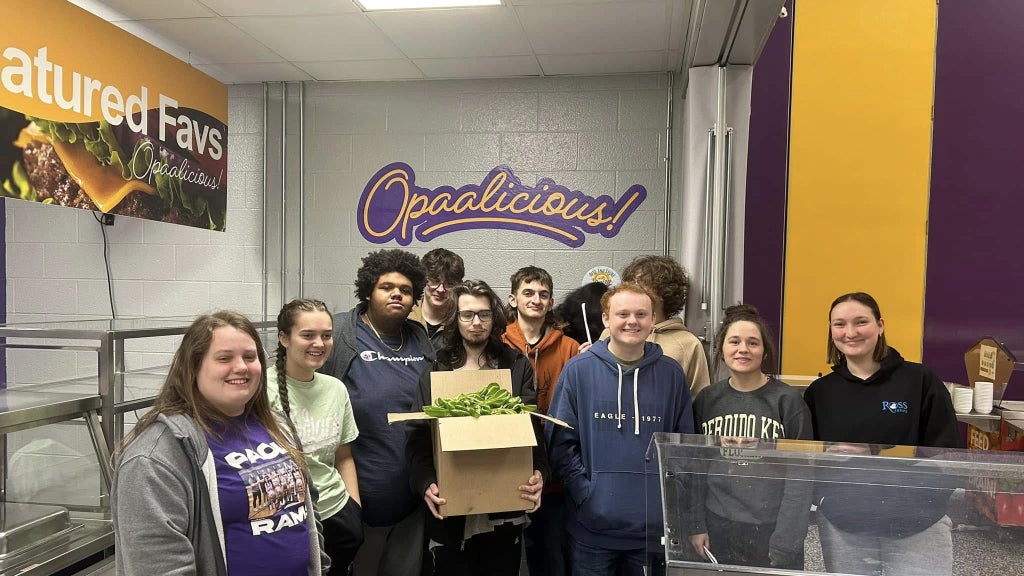
Paoli FFA members deliver fresh greens that will be served in their school’s cafeteria. Photo courtesy of Samantha Goen.
It’s not often that a vertical gardening project starts with a pig, but that’s what happened at Paoli Jr. Sr. High School in Indiana.
About 10 years ago, agriculture teacher Cory Scott was asked to implement 1:1 Chromebooks in his classroom, meaning each student would have access to a computer. As a result, more math and English lessons also would be incorporated into his curriculum.
“I said I was bringing a pig to school, and we’d breed her and make a website to document her progress through pregnancy and birth,” Scott says. “That’s how it all started — but not where it ended.”
The agriculture program kept two of the original pig’s daughters, Peppy and Dolly, and students raised those pigs in a corner of the school’s greenhouse. At the end of the year, Peppy didn’t have a new home. A student suggested harvesting the pig, with the meat used for school lunches.
“I wasn’t sure how the kids would react to that, but it ended up being one of the largest lunch days ever at our school,” Scott says. “That’s when we realized we were on to something — that kids want to know where their food comes from, and they understood the pigs had a good life because they took good care of them.”

Paoli FFA members clean their pigs’ pens. Photo courtesy of Samantha Goen.
The program expanded to include more pigs until they outgrew the greenhouse, where students had grown bedding plants for sale for years. “The plant kids were getting kind of upset because they didn’t have room for their plants and the whole greenhouse was full of pigs,” Scott says.
In 2018, students raised more than $200,000 to build a pig barn. “We call it the ‘Paoli Pig Co-op,’” Scott says. “Most of the pigs we raise spend their summers as show pigs. When their show careers are over, they’re processed, and we sell our pork to the community and restaurants.”
Spreading Their Roots
With the greenhouse pig-free, the horticulture students expanded the hydroponic system already in place with the idea they, too, could provide food for school meals.
“We can grow roughly 800 heads of lettuce every four weeks with the original system, which we call ‘the Ark,’” says Samantha Goen, who also teaches agriculture at the school. “We harvest one bed each week and deliver that to the cafeteria.”
Goen says when the system is running at full speed, students produce about 50% of the lettuce served in the cafeteria’s unlimited salad bar. Students also grow cucumbers and cherry tomatoes in the hydroponic systems.
“I’d say we produced more than 1,500 pounds of cucumbers last school year,” Goen says. “We’re also experimenting with growing beets, and my eighth graders grow potatoes in 50-gallon barrels cut in half. The potatoes we don’t sell to the cafeteria are sold at a farmer’s market in town.”
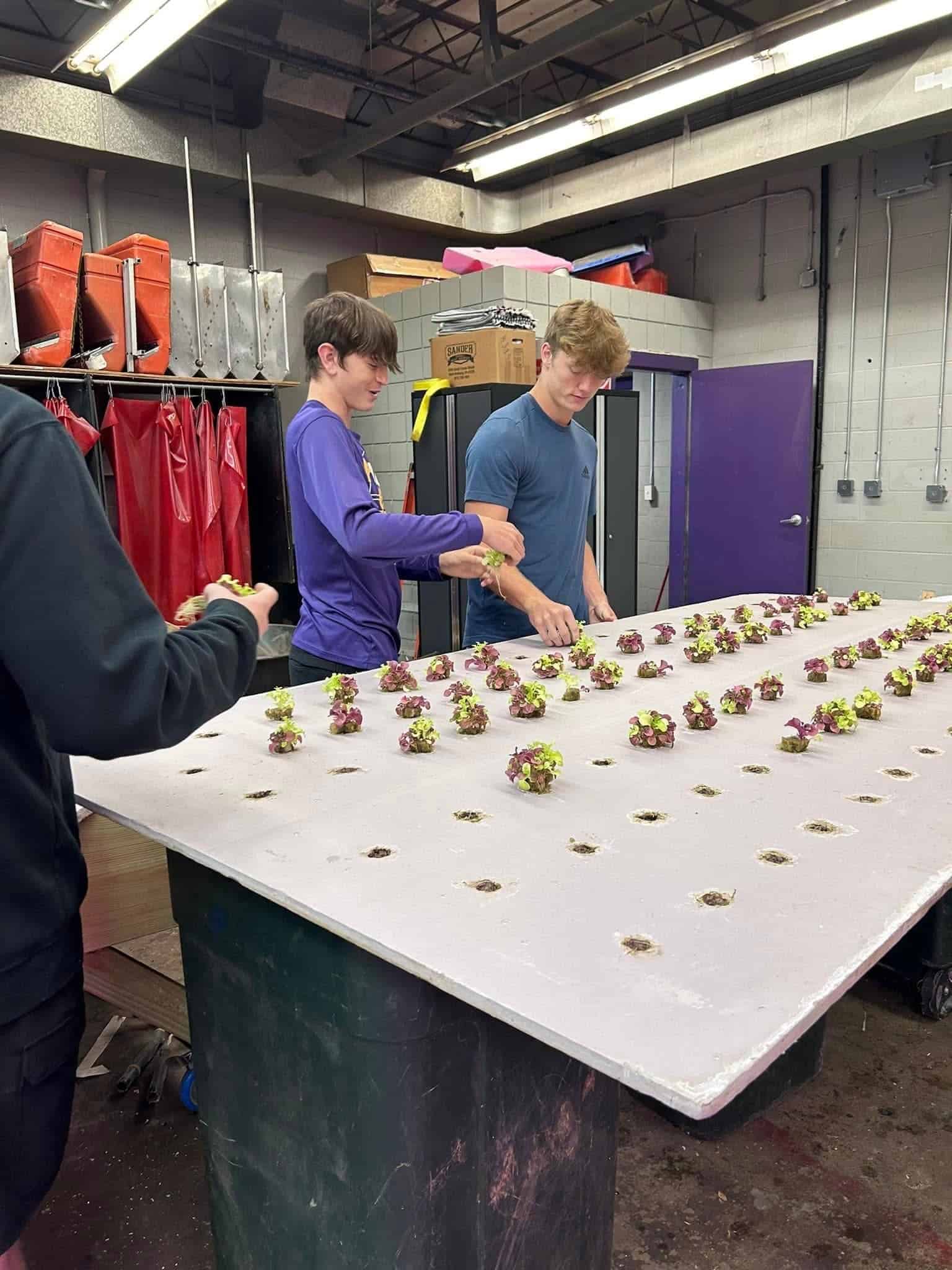
Paoli FFA members add starter plants to their hydroponics system. Photo courtesy of Samantha Goen.
Goen says her five-year goal includes procuring three more hydroponic continuous drip systems and building another Ark. “With that, we could double the amount of produce we are producing,” she says.
Learning has covered nearly every discipline. Scott says students’ writing improved because they cared about their topics — raising pigs and growing produce — and math became less of a theoretical exercise because students were calculating feed, breeding cycles and other real-world challenges.
Goen says she caught students nibbling lettuce as they worked with the hydroponics units. “They said it just tasted so good they were tempted,” she adds. “Kids and vegetables usually don’t mix, but we did some taste tests in class whenever we harvested a new variety of cucumber, lettuce or tomato. They rant and rave about how good the lettuce tastes and how it’s so much better than they typically get in the store.”
What It Takes to Grow and Give
Students are also learning more about leadership and giving back. The 2024 chapter officer team attended a leadership conference and returned to school brimming with ideas for community service. Ultimately, the chapter assembled “Farmer Bags” consisting of sandwiches, homemade cookies, energy drinks and other snacks and goodies.
“We delivered about 50 meals to farmers during the 2024 harvest season, and this year the chapter plans to deliver 150 meals made of our pork for pork nachos,” Goen says. “We do a lot of community service, but we don’t always see the instant return on what we’re doing. This time, the farmers gave handshakes, thanked us and called the school to tell the principal how much they enjoyed the meals. It was so nice for the kids to feel that people really appreciated it.”

Paoli FFA members deliver a homemade harvest meal to a farmer in their community. Photo courtesy of Samantha Goen.
Goen notes Paoli is located in a farming community, yet more than 50% of its students are generations removed from the farm.
“Giving them real-life, hands-on experience where they realize they can grow lettuce in water with just a few nutrients, or know what it takes to raise a pig and understand what it takes to put in the work to keep something alive, and that they’re proud of it, is probably the biggest thing students have learned from all this,” she adds. “They will take what they learn in the ag department and be able to use that in their lives.”



